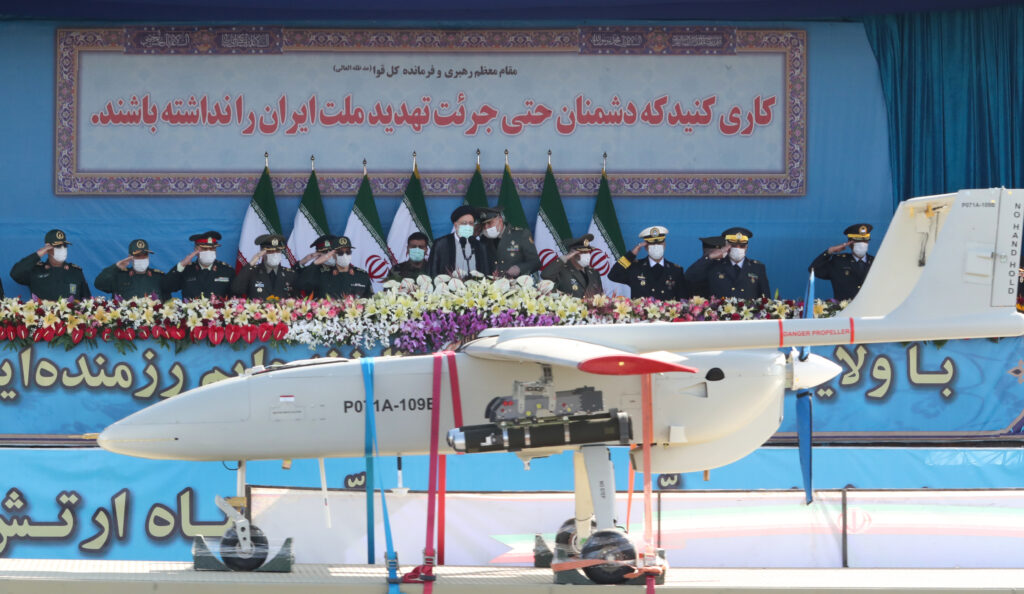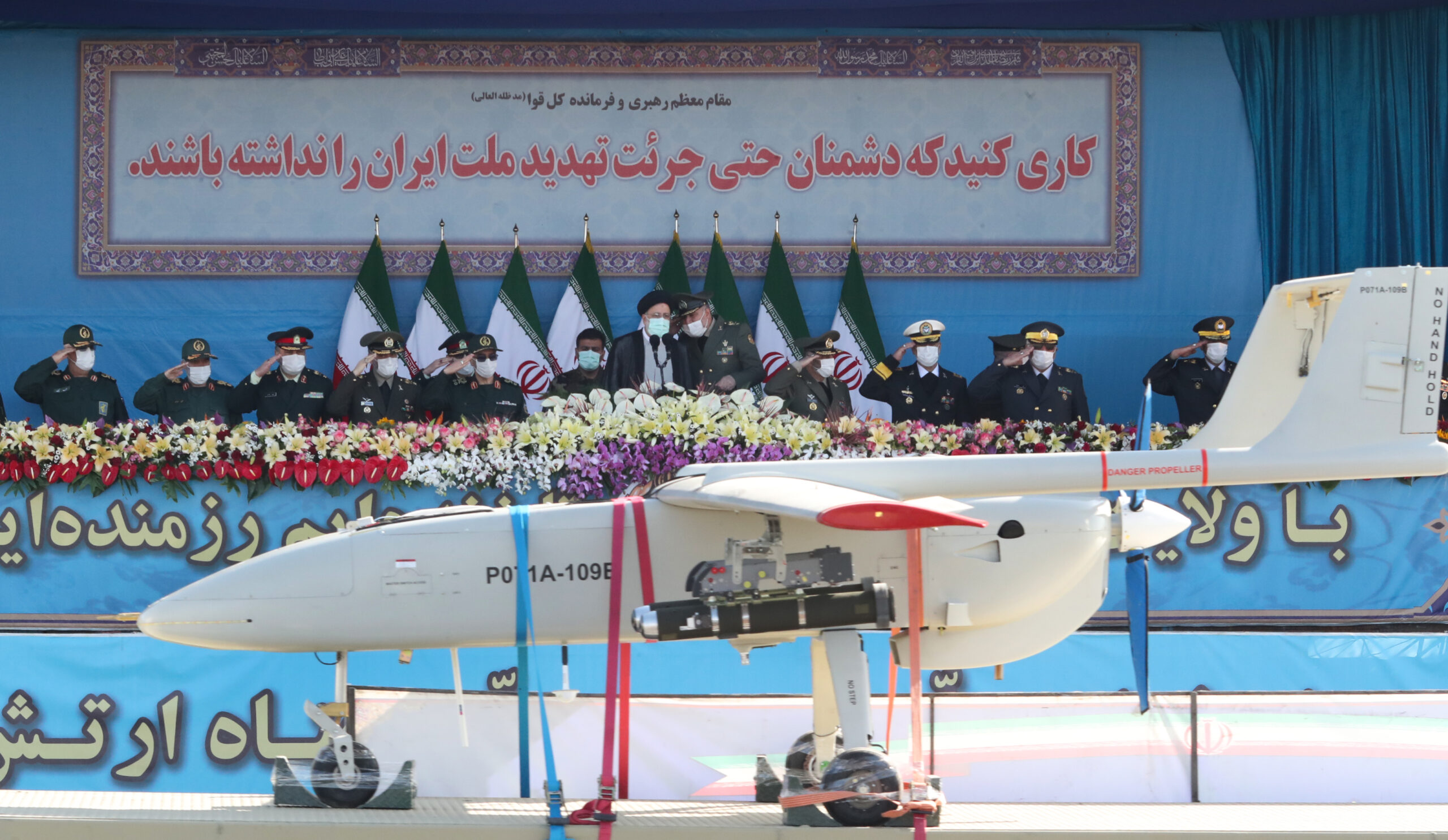Author: Danilo dalle Fave - Article Intelligence and Military Strategy Team
The Iranian strategic doctrine and the role of drone warfare
Iranian strategic doctrine has been influenced by the peculiar nature of its political regime and its history. The Islamic Revolution of 1979 infused in the Iranian strategic doctrine of Shah’s era, inspired by the contemporary Western military doctrines, some elements that influence the current role of drones in Iranian warfare: “holy defence”, export of the revolution, and especially the concept of self-reliance are the ideological foundation of the current Iranian strategic doctrine.
The Iraq-Iran war of the ‘80s has defined the current duality of Iranian armed forces: due to the distrust toward the Iranian army (Artesh), seen as an instrument of Shah’s supporters, the khomeinists developed the Islamic Revolutionary Guard Corps (IRGC) as a parallel army and the main instrument of their foreign policy. The purges against the high command of Artesh and the lack of strategic doctrines among the pasdarans compelled them to create an ad hoc military doctrine, deeply influenced by their origin as an ideological militia with a revolutionary structure.
The result is a strategic doctrine centred around three pillars: proxy warfare, which means the use of guerrilla groups of Shia communities around the Islamic world used as an instrument for the projection of Iranian influence abroad; asymmetric warfare, a direct consequence of the military and technological superiority of their enemies; the focus on Ballistic missiles, which is caused by the weak Iranian air forces and the foreign dependency for aeronautical components and have compelled to focus on specific arms systems that can provide deterrence and be produced domestically.
Despite being formally a defensive strategic doctrine, the current supreme leader Ali Khamenei has provided also the official state doctrine for external interventions in 2010, the so-called two-wing doctrine: the Foreign Ministry and the Quds Force, the overseas operations arms of the IRGC, have the task to protect Iran and enhance Iranian role in the region. This means that the military instrument is embedded in Iranian foreign policy.
IRGC interventions of the last ten years have shown how foreign operations are usually conducted when certain conditions are met: the presence of a Shia community that can provide the proxy actor (e.g. in Lebanon Hezbollah or the Houtis in Yemen), the weakness of the state actors, like in Iraq or Lebanon, that can allow the strengthening of pro-Iranian forces and provide a logistics pipeline, capable of transfer personnel, weapons and allowing training by IRGC forces.
In this framework, drone warfare is exclusively conducted by the IRGC aerospace force, which also controls Iran’s strategic-missile force. Drones are used to compensate for the weakness of Iranian air forces in the reconnaissance and surveillance domain and the industrial constraints to the mass production of warplanes.
IRGC drones are perfectly suited to match the IRGC view of warfare: in the air domain, drones can be used along with ballistic and cruise missiles to attack enemy positions to strike and rapidly retreat, for reconnaissance and to overwhelm enemy positions. Swarms of loitering munitions can overburden enemy air defence allowing missiles to strike their objectives. The recent use in the Ukraine of Iranian-made drones by Russia is a clear example of how these kinds of saturation tactics can be very effective.
In the sea, the traditional naval swarming tactics, developed during the Iran-Iraq war, can be augmented with unmanned vehicles and balance the military superiority of the US and their allies.

Iranian Unmanned Aerial vehicles and industry
The first family of Iranian drones are the Iranian Aircraft Manufacturing Industrial Company (HESA) Ababil: originally developed by the IRGC-owned Qods Aviation Industries, the Ababil-1 was a suicide drone used during the Iran-Iraq war usually launched by pneumatic truck launchers. Now they developed a specific Unmanned loitering munition drone, the DIO Arash.
This experience allowed the production in the 90s of the Ababil-2 and its different variants: the Ababil-B, a target drone for air-defence exercises, the Ababil-S, the first Iranian surveillance drone, the Ababil-T, a twin-tail variant that can be used for surveillance and as strike munition payloads and has been adopted by Hezbollah and the Houtis. The latter has deployed the Qasef-1 and Qasef-2K, Abadil-2 variants with 30 kg warheads, used as loitering munition against the Saudi-led coalition forces since 2016.
The Ababil-3, suspected to be a copy of the South African Denel Dynamics Seeker, is an Intelligence-Surveillance-Reconnaissance (ISR) drone and has been used extensively by Iranian forces during the Syrian civil war. The last member of this family, the Ababil-5, debuted in April 2022 and appears to be a Unmanned Combat Aerial Vehicle, similar to the American Predator.
The other family of Iranian drones is represented by the Mohajer, the first ISR drone produced in the 80s and widely exported to Iranian proxies. Many Iranian drones are the result of a reverse-engineered version of Western drones, like the IAIO Fotros, IAIO Yasir, HESA Hamaseh, and IRIAF Kaman-22: the most important of them are the Saegheh, an entire family of drones that are the result of the acquisition of US Lockheed RQ-170 Sentinel, downed in 2011, which shows how Iranian industries are capable to copy stealth drones and in general to adapt western technology for internal purposes.
The most important drone family is the Shahed: the HESA Shahed-129, a dual-role drone is deployed for patrols and direct attacks for the Iranian Army and Navy, while the HESA Shahed-136 is a loitering munition designed for swarm attacks against ground targets. The last addition is the HESA Shahed-149, a reusable attack drone capable of launching missiles and bombs and being equipped for electronic warfare.
As previously said, Iran relies on drones in order to overcome the lack of a proper aerospace industry: the cost-effectiveness of drones in production and maintenance avoids the costly traditional aircraft procurement. At the same time, it is also a matter of internal political dynamics. Drone producers are mostly linked with the IRGC which managed to concentrate power in recent years, especially with the current president Ebrahim Raisi. The main consequence of this, apart from a greater role of IRGC in Iranian politics, is the “capture” of funds by the IRGC, leaving the Iranian Air Forces with shrinking resources to develop their vehicles and devices.
That is why Iran relies, as during Shah’s era, on imports: the recent discussion for the procurement of the Russian Su-35, a 4th generation multi-role jet fighter, is a clear sign of the overreliance on imports for traditional aircraft.
Conclusion
Summing up, drone warfare is an important element of the Iranian way to wage war: it reflects Iranian leadership’s preference for asymmetric approaches and the adaptation to Western sanctions that prevented the development of traditional aerospace vehicles. Despite domestic strifes and tensions with the US, Iran can exploit its expertise in drones to obtain technology and know-how in the aerospace field that needs to scale up its military prowess: deeper cooperation with Russia, favoured by the isolation of both countries in the international arena, could augment Iranian aerospace forces, with consequences on the military balance in the Middle East.

No comments.